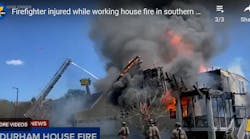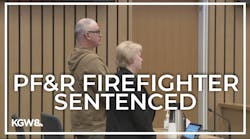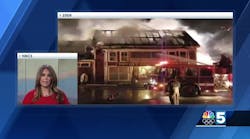Nov. 20--When the Waldo Canyon fire raged through the hills west of Colorado Springs in 2012, communication was crucial for firefighters. But outdated equipment and a stressed system left El Paso County Sheriff Terry Maketa and other area officials looking for solutions.
In June, another devastating fire erupted in the woods of Black Forest north of Colorado Springs. Once again, more than 120 fire agencies from around the state and the country struggled to communicate as radio networks near the blaze were bombarded by transmissions.
"The last two years have really defined what the new norm could be," said Maketa during a Colorado Springs City Council and El Paso County Board of County Commissioners work session Wednesday morning.
Maketa reinforced his concerns about area public safety and the radio system that was installed before 2000 just moments before a consulting firm presented its recommendations for a complete overhaul to the system.
The sheriff said his deputies experience "events every week that stress this system," not simply during major disasters. He noted that area responders regularly experience delays and bad transmissions whether the situations are routine or critical.
Rick Burke, a managing partner at Televate, LLC., echoed Maketa during his presentation saying most radio networks have a life cycle of 10 to 12 years while the one used by the Pikes Peak Regional Communications Network is more than 13 years old.
The PPRCN has more than 70 agencies on its network which consists of 5,750 user radios. The network handles traffic of about 250,000 calls per week.
"The PPRCN does represent success," Burke said. "But the network is now near the end of its life cycle."
Burke's company, which specializes in communications for public safety agencies, recommended that the PPRCN needs "architecture change and replacement of radio transmitters" by 2015. Burke expects population growth in the Pikes Peak region to continue and add even more stress to the communications network.
According to Burke, technology has evolved and the PPRCN network needs to switch to an Internet protocol-based system that would not only be able to handle more radio traffic, but would be compatible with computers and mobile devices.
The PPRCN recently upgraded the software that supports its network, switching to a Microsoft Windows-7-based system. That shift cost $2.2 million and is part of about $32 million invested in the network since 2000.
Televate proposes one of three options for the network's architectural upgrade, ranging in cost from $6.4 million to $19.7 million. Burke said the replacement of radios would be a burden that would fall on each individual agency.
El Paso County commissioner Sallie Clark asked Burke about potential grants that might help pay for such a project. Burke said there has been a decline in availability of grants for network upgrading.
"We are going to have to look locally to fund this radio network," he said.
Copyright 2013 - The Gazette (Colorado Springs, Colo.)





